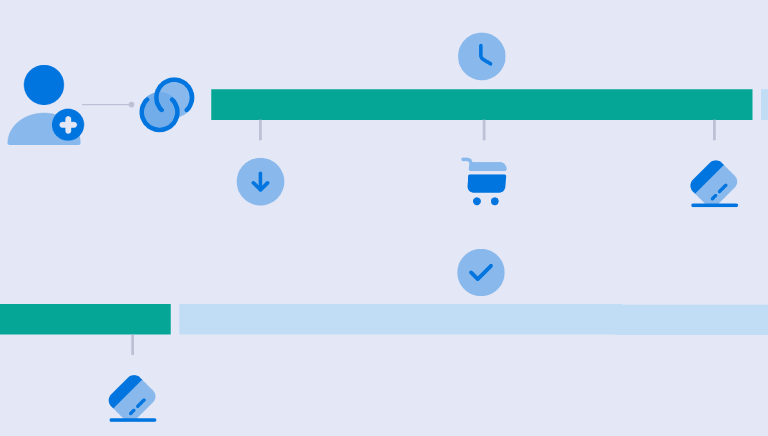Marketers and advertisers spend a significant part of their budgets on getting people to download and use their applications. With a seemingly endless array of digital channels to choose from, savvy marketers lean on data to ensure they’re getting the best ROI for their marketing spend.
Enter media mix modeling (MMM), a powerful way to optimize modern marketing strategies across available channels to ensure you’re getting the biggest bang for your advertising dollar.
What is media mix modeling (MMM)?
Like the most effective marketing tools, media mix modeling (MMM) — also referred to as marketing mix modeling — uses the power of data to measure the impact of advertising and marketing activities. Marketers and advertisers use these insights to find the best mix of media channels to achieve their business objectives.
MMM considers a variety of inputs, including available media platforms and outlets where marketers can promote their apps — websites, social media, mobile marketing, and email marketing, as well as more traditional radio, television, and print channels. MMM also takes into account the marketers’ desired business outcomes, such as conversions, downloads, app installs, brand awareness, and other important metrics.
MMM factors in available marketing budget allocation, too, because it determines which mix of media channels will have the greatest chance of success and a strong return on ad investment.
Mix media analysis also takes a deep dive into how seasonality affects the customer journey. That’s because the demand for certain offerings, including specific apps, can vary dramatically from one time of year to another and significantly impact marketing decisions. For instance, an app that sells beachwear will likely be more popular during the summer than the winter, and a holiday shopping app will perform better in November and December than it will in the springtime. Seasonality patterns are often easy to predict, and they play a key role in MMM’s accuracy since they can help marketers and advertisers fine-tune their strategies to align with fluctuations in consumer behavior.
Marketers can use insights from media mix models to compare the effectiveness of each potential marketing channel. This analysis often yields surprises. Some channels that were considered slam dunks may not be moving the needle at all. Other under-the-radar channels may be reaching more consumers than expected and driving success.
The key role of data and automation
As with so many marketing tactics, aggregated marketing data is essential to media mix modeling. Historically, media agencies were the only ones with the requisite data and resources to conduct MMM — and did so as an (expensive!) consulting service for advertisers. The work was manual and often cumbersome. Plus, by the time it was delivered to clients, it was often already out of date.
Now, modern MMM tools rely on automation and artificial intelligence (AI) to deliver quick but rich insights. Modeling tools ingest a wide range of historical data for statistical analysis, including information on prior ad spend by channel, click-through rates, impressions, prior sales data, market research data, engagement, and more. They then use statistical techniques, such as multi-linear regression models, to forecast future performance and illustrate the potential outcomes of various investment decisions. These models predict how well marketing strategies will perform in the months and years to come and help marketers with an eye on the long term make informed decisions that will drive future growth.
MMM vs. data-driven attribution modeling
A common misconception is that MMM and multi-touch attribution (MTA), a data-driven attribution model, are the same. Though they can address similar business needs, MMM and MTA are technically unrelated.
The primary difference is that MMM considers aggregate data, as well as other signals, and then uses machine learning-powered analysis to generate budget allocation recommendations and forecasts. MTA, on the other hand, helps marketers understand the impact of each touchpoint within a marketing campaign on a desired conversion. It considers all the interactions a user has — like viewing an ad, opening a marketing email, and visiting a mobile website — before completing a conversion, and it distributes credit to each.
There are many different methods of MTA, including “linear decay” which assigns progressively more credit to later touches, and “U-shaped” which assigns more credit to the first and last touches. MTA aims to help marketers understand the path to conversion and tends to have a narrower scope, relying on granular user-level data. Whereas MMM focuses on the overall impact of media channels and marketing activities to a business’ bottom line, MTA helps marketers understand which specific ads or touchpoints influence a customer’s conversion.
Putting the model to work
The insights from MMM help provide a roadmap for a successful marketing strategy. Once marketers know which channels are most effective, they can zero in on the ones that are high performing and use them in the most impactful combination for their budget.
Developing a marketing strategy isn’t a one-and-done effort, though. It’s an ongoing process, and MMM can help marketers and advertisers evaluate and refine their marketing performance in real time as the market shifts and consumer behavior changes.
As the industry continues to evolve, MMM can help in-the-know marketing teams make better bets on their future marketing efforts — and their bottom line.
Ready to grow?
Guide to Attribution Windows: What They Are and How They Work

How Do I Choose a Mobile Analytics Tool?

How to Get the Most out of Unified Analytics























